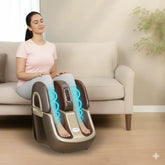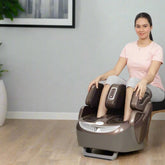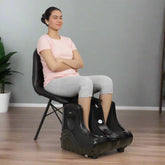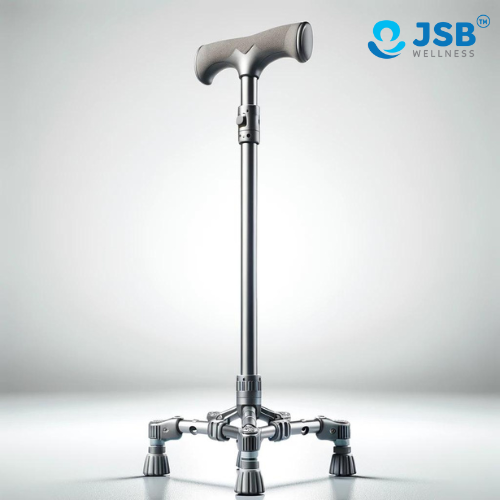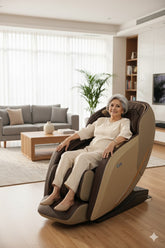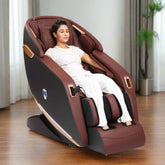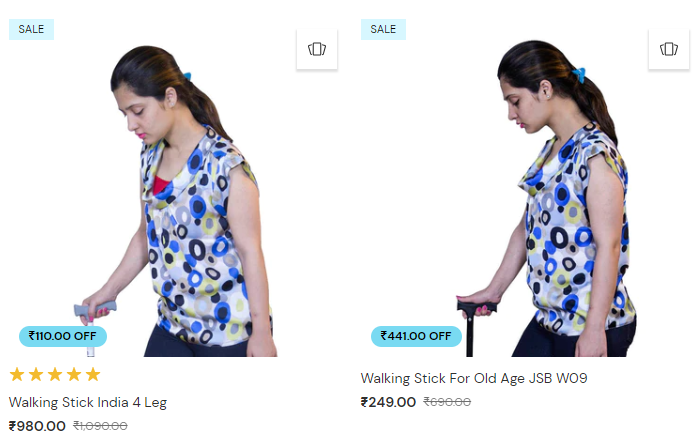How do I choose a walking stick for an elderly person?
Introduction:
Choosing the right walking stick for an elderly person is not just about finding a support tool; it's about enhancing their independence, safety, and confidence in moving around. The quest for the perfect walking stick can be overwhelming, given the vast array of options available, each designed to meet different needs and preferences. In this blog post, we'll guide you through the essential factors to consider when selecting a walking stick for an elderly loved one or for yourself. From understanding the various types of walking sticks and their features to considering the user's physical needs and personal style, we aim to simplify the process. We will also delve into how to correctly size a walking stick, ensuring it provides the optimal balance of support and comfort. Whether you're a caregiver, a family member, or an elderly individual seeking more autonomy in your daily walks, this post is your comprehensive guide to making an informed choice. Let's embark on this journey to find not just a walking stick, but a reliable companion for the walks of life.
What stick is used by old people to support walking?
Old people often use walking sticks, also known as canes, to support walking. Walking sticks come in various types to cater to different needs and preferences. Here are the most common types:
-
Standard Walking Stick (Single Tip): A traditional cane with a single tip, designed to offer balance and support. It's suitable for those who need slight assistance with stability.
-
Quad Canes: These have four feet at the base, offering more stability than a single-tip cane. They're ideal for those who require additional support when walking.
-
Folding Canes: Designed for convenience and portability, folding canes can be easily stored in a bag when not in use. They're perfect for travelers or those who only need occasional support.
-
Walking Sticks with Seats: Combining the function of a walking aid with a portable seat, these are excellent for individuals who may need to rest frequently while walking or standing.
-
Offset Canes: These have a curved handle at the top, designed to distribute weight along the shaft and reduce wrist strain. They're beneficial for individuals with arthritis or wrist problems.
-
Adjustable Canes: These canes allow for height adjustment to suit the user's specific needs, ensuring the cane is used at a comfortable and safe height.
-
Specialty Canes: Including canes with unique features like built-in lights for visibility, shock absorption to reduce impact, and decorative designs for personal style.
When selecting a walking stick for an elderly person, it's essential to consider their specific needs, such as the level of support required, their mobility issues, and personal preferences in terms of design and features. Consulting with a healthcare professional can also provide valuable guidance in choosing the most appropriate walking stick.
Should elderly use walking sticks?
Yes, elderly individuals may greatly benefit from using walking sticks, but the necessity and benefits depend on their individual health, mobility status, and lifestyle needs. Here are several reasons why elderly people might use walking sticks:
-
Improved Balance and Stability: Aging can affect balance and coordination. Walking sticks provide additional points of contact with the ground, enhancing stability and reducing the risk of falls.
-
Increased Mobility: For seniors experiencing difficulty in walking or standing, a walking stick can serve as a support, enabling them to maintain a level of independence and mobility.
-
Joint Relief: Walking sticks help distribute body weight more evenly, taking pressure off the legs, knees, and hips. This can be particularly beneficial for those with arthritis or other conditions affecting the joints.
-
Confidence and Safety: The added support from a walking stick can boost an elderly person's confidence in moving around, both at home and while out, making them feel safer and more secure.
-
Injury Prevention: By providing extra support and stability, walking sticks can help prevent falls and injuries, a crucial consideration since falls can have serious consequences for elderly individuals.
-
Posture Support: Proper use of a walking stick can encourage better posture by aligning the body correctly, which can prevent strain and discomfort during walking.
However, it's also important to recognize that not every elderly individual may need or benefit from a walking stick. The decision to use one should be based on an individual's specific health conditions, mobility challenges, and after consultation with a healthcare provider. For those who would benefit from using a walking stick, proper selection, sizing, and training on how to use it correctly are crucial to ensure it provides the intended support and safety benefits.
So, How do I choose a walking stick for an elderly person?
Choosing a walking stick for an elderly person involves considering several factors to ensure the stick provides the appropriate support, comfort, and safety. Here's a step-by-step guide to help you make the right choice:
1. Assess the Level of Support Needed
- Light support: If the person needs the stick mainly for balance, a standard walking stick with a single tip may suffice.
- Moderate to high support: For those requiring more substantial support, a quad cane or a walking stick with a broader base can offer greater stability.
2. Determine the Right Height
- The walking stick should reach the wrist when the user's arm is at their side, and their feet are flat on the ground. This ensures the user can slightly bend their elbow (about 15 degrees) when holding the cane, promoting comfort and reducing strain.
3. Choose the Handle Type Wisely
- Ergonomic Handles: Good for those with arthritis or grip issues, as they reduce hand strain.
- Fritz or Derby Handles: Suitable for general use, offering comfort and style.
- T-shaped Handles: Classic and straightforward, best for those who require minimal support.
4. Consider the Material
- Wood: Traditional and durable, but may be heavier.
- Aluminum: Lightweight and often adjustable, suitable for varying heights and easier to carry.
- Carbon Fiber: Very lightweight and strong but typically more expensive.
5. Look for Additional Features
- Adjustability: Allows the walking stick's height to be changed as needed.
- Foldability: Offers convenience for storage and travel.
- Specialty Tips: Some canes have tips designed for specific surfaces or activities.
- Accessories: Such as wrist straps or reflective materials for safety.
6. Factor in Personal Style and Preference
- The walking stick should not only be functional but also match the user's personal style. There are various designs and colors available, so consider choosing one that the person would be happy to use daily.
7. Consult with a Professional
- Before making a final decision, it's advisable to consult with a healthcare professional, such as a physical therapist. They can provide personalized advice based on the elderly person's specific needs, ensuring the walking stick will offer the correct level of support and stability.
By carefully considering these aspects, you can choose a walking stick that enhances the elderly person's mobility, ensures their safety, and suits their lifestyle.
Conclusion on How do I choose a walking stick for an elderly person:
Choosing the right walking stick for an elderly person is a thoughtful process that significantly impacts their mobility, independence, and quality of life. It's not just about picking any cane off the shelf; it involves understanding the individual's specific needs, preferences, and lifestyle. The key factors to consider include the level of support required, the correct height of the stick, the most comfortable and practical handle type, the material of the walking stick, and any additional features that might enhance usability and safety.
By selecting a walking stick that offers the right balance of stability, comfort, and style, you can provide an elderly person with a valuable tool that supports their mobility and independence. Remember, the goal is to enhance their confidence in moving around, reducing the risk of falls and injuries, and enabling them to engage more fully in daily activities.
Consultation with healthcare professionals, such as physical therapists, can provide invaluable guidance in making the best choice. Ultimately, the right walking stick can become a trusted companion for the elderly, ensuring they continue to walk through life with dignity and ease.

